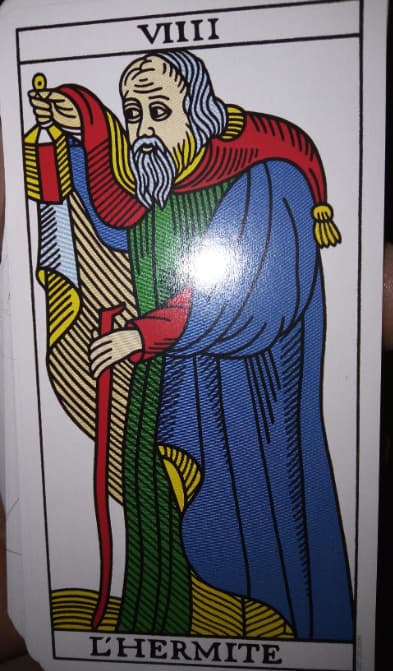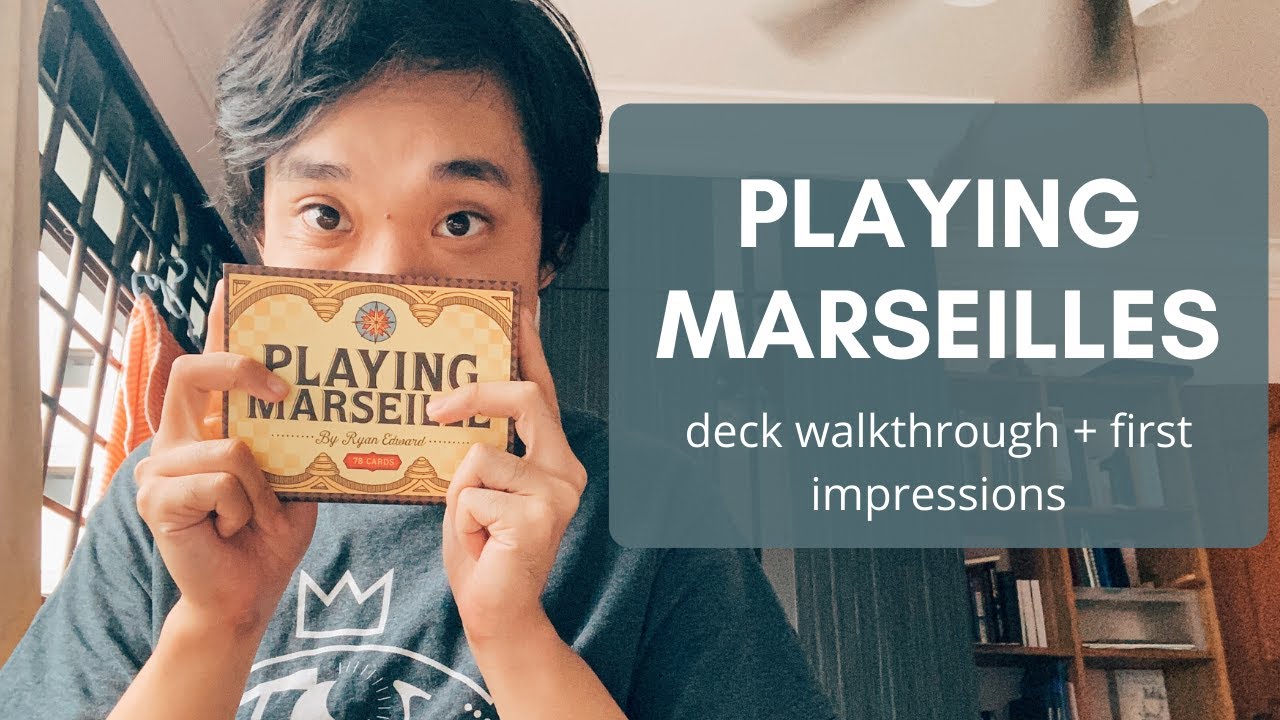When I first started, I grabbed what I thought was a normal deck, and turns out it’s Tarot of Marseilles.
The pip cards are just symbols - no pictures, no scenes, just swords and cups arranged in patterns. Every tutorial online uses Rider-Waite with their detailed illustrations while I’m staring at four plain wands wondering what story they’re supposed to tell.
Part of me wants to stick with it because the minimalist style is kind of beautiful and forces you to really feel the cards instead of relying on obvious visual cues. But also… am I just making this way harder than it needs to be? Anyone else learn on Tarot of Marseilles first or should I grab a scenic deck to train wheels this thing?
18 Likes
Deepen Your Tarot Practice Beyond the Cards
Finding meaningful tarot discussions and authentic guidance can be surprisingly difficult. Discover a space where your questions are welcomed and your intuitive growth is celebrated: Start Your Journey
I don’t know if I could say one way or another that it’s a good idea… but this is the deck I started with. It might not be the easiest, but it’s doable.
I love how finding the right deck can feel so special. If the images relate to you and the cards feel comfortable, you’re off to a great start.
The Marseilles tradition and Rider-Waite decks have some similarities, so Rider-Waite guides could help you get going. Their core meanings overlap, but as you use your deck, you’ll develop your own interpretations, which makes the whole experience more personal.
Books are helpful, but your impressions can reveal things that no guide will. Maybe start with the usual meanings and let your intuition fill in the rest? There’s no need to rush; each reading offers new insights about the cards and yourself.
The rainbow colors in Marseille pips serve as teaching tools. I think the red and blue patterns vary between suits?
I pay attention to which cups are blue versus red during my readings, as it adds layers of meaning that scenic decks often miss. This color coding forms a symbolic language that’s been around much longer than illustrated pips.
When I got stuck with my Marseilles deck, I saw two options: memorize all the Rider-Waite meanings and try to match them to these plain pip cards, or go back to basics with just the suit and number symbolism.
The memorization route was too much without those visual cues. Like learning a language without any pictures to help. So I’ve been trying the second approach. Just working with what ‘four of cups’ means based on the number four (stability, completion) and cups being about emotions.
Marseille pip reversals are actually pretty straightforward once you get used to them.
Like with five cups upside down - it’s just blocked water energy, plain and simple. No need to decode whether someone’s sad about something or moving on from it. The meaning stays cleaner without all those pictorial details getting in the way.
Those plain pip cards in your Marseilles deck are teaching you something important. The scenic decks spoon-feed you meanings, but these simple ones let you discover things for yourself. When I switched to Marseilles, I had to stop thinking in Rider-Waite terms.
The pips became like meditation tools instead of story cards. Four wands might mean building something solid one day, or feeling stuck the next day. The cards show me different things depending on what’s going on in my life. You’re already on the right track by feeling the cards instead of trying to read them like a book.
That stripped-down style lets your intuition do the work, which is probably how tarot was initially supposed to function anyway.
When I started with Marseilles, the best thing was that RW resources work just fine with it.
The systems are close enough that meanings carry over, you just gotta trust yourself more with the pip cards. The tarot community can be weird about needing the ‘perfect’ deck to start learning.
Like, somehow the Universe cares which deck you picked? Your deck found you for a reason. And those simple pips? They might make your intuition stronger because there’s less visual noise to get caught up in.
Marseilles pips work really well for elemental dignities.
I’ve been using a simple three-card spread where you read the suits as pure elemental energy. Just lay out three cards and look at how fire, water, air and earth support or clash with each other. The minimal pip designs actually help you focus on the elemental relationships.
Practicing Marseilles readings in my local tarot meetup group helped tremendously with those ‘plain’ pip cards, when you’re reading for someone else in real-time, your intuition kicks in differently than when you’re studying alone, and suddenly those four wands start speaking their own language.
You can treat the pips as energy patterns rather than scenes. The group dynamic really brings out the meditative quality of these minimal cards since you’re not relying on illustrated prompts but pure intuitive flow between reader and querent.
I remember when I first started with the Marseilles deck, I didnt realize how critical context is in a reading.
With the simple images on these cards, where they land in your spread means everything. So, take it slow and get familiar with different spreads from the beginning. Let patience be your guide.
Hi!
Marseille pip journaling is a nice way to relax. Try sketching the card patterns, like cups or swords, in your notebook. Drawing them connects you in a special way, different from just writing about them. Let your pen move slowly, and you’ll find a deeper connection to the cards.
The Marseilles deck is… tricky for new readers. My experience, anyway.
My cousins and nieces struggled with it because there’s no visual story like other decks have. Funny enough, though, experienced readers seem to prefer it. My mom’s book club friends and other people who’ve been reading for a while actually like that it’s so minimal.
They say it lets them read more freely. I usually warn people that Marseilles makes those first few lessons harder, but it pays off later. Once everyone’s comfortable with the basics, the readings get way more interesting.
I was reading Marseille pips totally wrong at first, treating them like individual Rider-Waite cards with their own little stories. The trick is reading them as combinations. Like when you pull 3 of Cups and 5 of Swords together, you’re looking at the relationship between 3 and 5, water and air elements, maybe even adding them up to 8.
Without all those illustrated scenes, you can focus on the actual numerology and symbolism. Makes way more sense with the minimalist style.
I love pip-only decks!
They strip everything down to just the suit symbols, so you’ll see five actual swords or three cups, nothing else. It’s totally different from decks like Rider-Waite, where each card has a detailed scene. Some readers prefer the simple approach because it doesn’t box you into one interpretation. A scenic deck might show Three of Swords as a pierced heart (classic heartbreak image), but with pips?
Those three swords are open to whatever feels right in your reading, maybe they’re about mental clarity or decisive action. The old Marseille-style decks use this approach. Instead of memorizing scenes, you work with number meanings and suit energies.
Lots of readers combine numerology with the elements of each suit.
There’s no wrong way to read tarot… use whatever deck calls to you. Some find abstract pips freeing, others need the visual stories of modern decks. Both work! If pip-style reading interests you, Tom Benjamin’s Tarot on Earth is a solid resource. He focuses on understanding the pure energy of numbers and elements rather than set pictorial meanings.
With Marseilles, intuition works differently; you feel the vibration when numbers meet elements rather than reading scenes.
Court cards have more impact without Renaissance clothing getting in the way. The King of Cups is just pure emotional mastery. And color matters so much more. Watch how red and blue show up across your spread, which shows you where the active and passive energies are.
Some people actually scry into those white spaces between the suit symbols.
Love the Marseilles deck!
Yeah, it’s one of the oldest patterns around. The pip cards can be tricky for beginners since they’re just symbols instead of the full scenes you get with Rider-Waite. But that simplicity has its own advantages that you develop your intuition faster when you’re not relying on someone else’s imagery.
Really comes down to how you like to learn. Some people need those visual hints from RWS, others do better with the stripped-down Marseilles style. Try both and see what clicks.
I hear you on the frustration front. It’s not easy finding solid material for Marseille like it is for Rider-Waite. But hang in there! Once you crack that first layer with Marseille, you’ll start building an intuitive bond that others spend ages trying to get.
Seven of Swords popped up for me too. The Marseilles version with just the plain swords helps you focus on that sharp mental energy instead of getting caught up in the imagery of someone sneaking around.
Those geometric patterns can put you in a meditative state. It’s interesting how odd numbers feel tense while even numbers feel balanced. The abstract approach works well.

